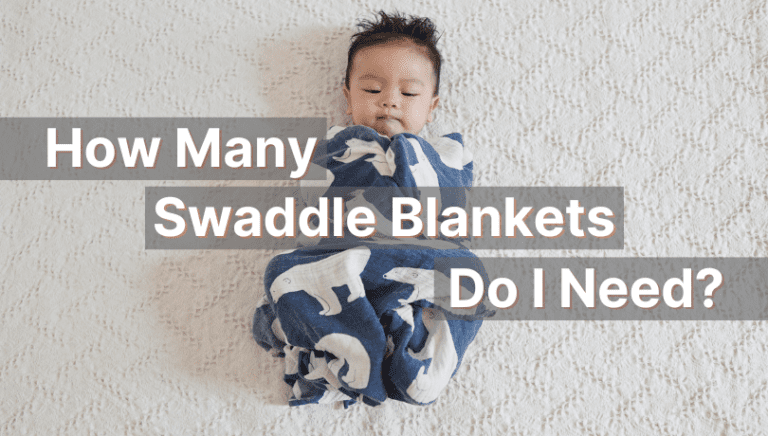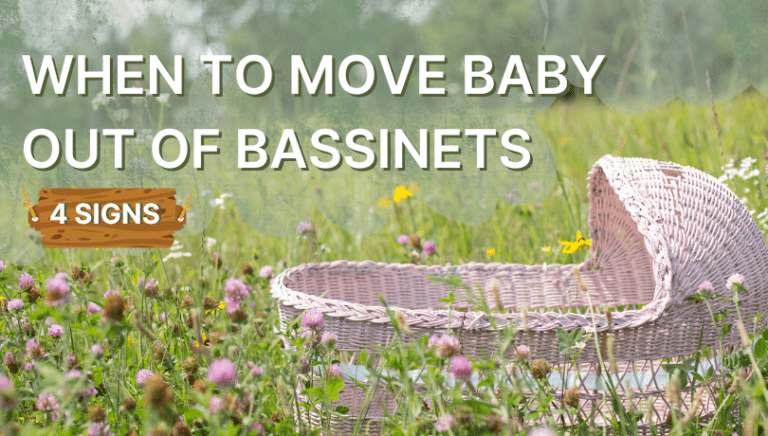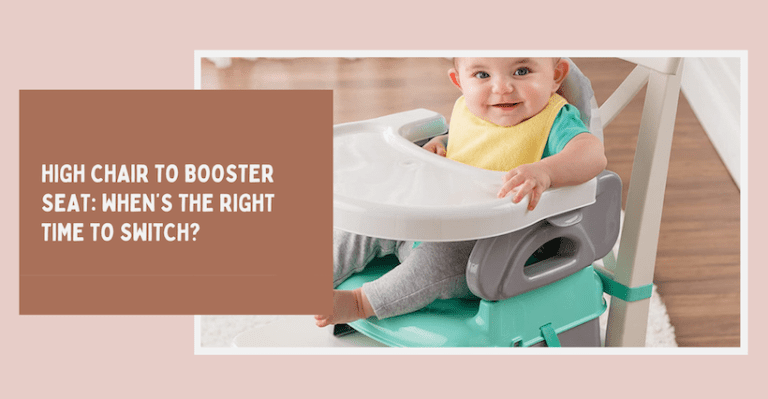Co-Sleeping vs Bed Sharing: Is One Better Over Another?
Motherhood and newborn care is never easy. I’ve been there myself. From trying to get your baby to sleep in their crib when they refuse to, and soothing your baby in your achy arms, deprived of sleep. I’ve seen all that and then some.
You may have even looked at factoids about bed-sharing and how that can possibly help.
So, let’s discuss the difference between co-sleeping vs bed-sharing, and if they are useful practices. I’ll also review some FAQs about contact napping that new moms have previously asked me about.
Table of Contents

Co-sleeping vs Bed Sharing
- Co-sleeping ― a sleeping style where you and your baby sleep close by for comfort and easy monitoring. Useful when your baby is still getting used to bassinets or cribs.
- Bed sharing ― a TYPE of co-sleeping where your baby sleeps on the same adult bed next to you.
There are two types of co-sleeping practices:
| Room-Sharing | Bed-Sharing |
|---|---|
| Same Room, Different Bed Your baby sleeps in the same bedroom as you but in their own crib, bassinet, bedside bassinet, or play yard. | Same Room, Same Bed Your baby sleeps right next to you on the same adult bed, sofa, sofa bed, or chair. |
Just so you know, room sharing is the safer co-sleeping option. And bed-sharing has more risks than advantages.
Why Is Bed Sharing Not Safe?
I’m strongly against bed-sharing, even for small naps. Bed sharing tends to amplify the risks of unsafe sleeping environments because

- Beds Not Firm: Adult beds are softer or plusher, increasing suffocation risks. The extra bedding like pillows, blankets, dangling curtains, etc., can also harm your baby.
- Gaps and Traps: Couches, adult beds, and other non-standard sleep spaces can trap or entangle your baby’s limbs at the headboard, footboard, or between gaps.
- Injuries From Parents: Many parents tend to toss around in their sleep. I know I do. So, you could accidentally roll over your child, causing injuries, suffocation, entanglement, or SIDS.
- Space Constraints: There may not be enough space for your baby to sleep comfortably, causing disruptions in their sleep cycle.
- Over-Attachment: When bed sharing becomes a habit, your baby could refuse to sleep on their own, making the transition to toddler beds or cribs that much harder.
Further Reading: At What Age Can I Bed Share With My Baby?
Benefits of Co-sleeping by Room-sharing
While bed-sharing is a big no, co-sleeping through room-sharing has benefits for your baby and you.

I prefer room sharing too! One main reason is because I have other kids running around the house, and it helps me keep an eye on my newborn without needing to step out of my room.
There are even more advantages to co-sleeping via room-sharing:
1. Easy Soothing
- If your baby is still getting used to their new environment, they may fuss and wake up now and again, seeking comfort or warmth.
- My Fiona was the same back then, and that’s why it helped to have her in a bedside bassinet in our master bedroom so my husband and I could lull her back to sleep.
2. Quick Check-Ins
- If you have a baby monitor at home, you might understand that sudden urgent need to check in on your baby, especially at night.
- Well, room-sharing eases that burden by having your baby close to you while also keeping them comfortable in their safe sleeping environment.
3. Fuss-Free Night Feeds
- Newborns need to be fed every few hours or so, even if it’s at night. And it can be difficult to run from one room to another to feed them when they cry. Room-sharing simplifies that!
- I’m someone who has breastfed all my six children. So, it helped to have my children close by to breastfeed them and pump out the rest of the milk to regulate supply.
4. Bonding
- As mothers who’ve borne our children, we naturally have a stronger bond with our babies. They learn to recognize our voice and smell and find comfort in that.
- With room-sharing, you strengthen that bond and extend it to your partner and caregiver by helping your baby adjust to new people.
Side-Note:
Have you ever noticed that babies behave differently with nannies and other non-parent caregivers?
I used to have a nanny for my son, Aiden. She had zero problems putting him to sleep in the crib. But on the flip side, he would always fuss with me or my husband, Terry!
Do you have similar stories? Please let me know in the comments!
What Is A Safe Sleep Environment For My Baby?
Here’s what the American Academy of Pediatrics tells us new, expecting, and experienced parents about safe sleep for our children:

- They need to sleep in their own sleeping space like a crib, bassinet, etc. (that automatically rules out bed-sharing).
- Their sleeping mattress should be firm and not sag when you place your baby in it.
- The mattress should be a perfect fit for the crib or bassinet and not leave gaps.
- You should place your baby only on their back. Not sideways and not face down.
- Your baby’s bed should be bare, with just the mattress. So, no pillows, blankets, or soft bedding.
FAQs: Co-sleeping vs Bed Sharing

1. Is It Okay to Let My Baby Sleep on My Chest?
It’s ok as long as you are awake, dear parent.
This is called contact napping, and it can be comforting for your baby. You can always lull them to sleep and transfer them to a crib or bassinet once they are soundly asleep.
If your baby prefers contact napping and nothing else, just make sure you check on these things every time:
1. Their head should be in a comfortable position and their neck shouldn’t slump forward or back
2. They breathe in and out with a steady flow and their airway is not obstructed
3. Their face should not be smushed into your shirt or the blanket, suffocating them.
My Tip: If it looks uncomfortable, it probably is. Change their position and keep them safe, dear parent!
2. Should I Let My Baby Sleep on Me During the Day?
Yes, it’s okay to let them sleep on you for daytime naps. Just don’t make it a habit!
When these naps continue, it can be difficult to transition them to their crib, bassinet, or other safe sleep space. So, ease them out of it as best as you can.
3. Can My Baby Sleep in My Arms?
Sure they can! But it’s more important to sleep train them soon and try transferring them to cribs or bassinets after they are asleep.
1. It is always safer to have them sleep in bassinets, cribs, or play yards. Not to mention your arms could use a break, don’t you think?
2. Also, when you hold them in your arms, keep their head straight and body closed in, rocking them gently.
3. Don’t make any sudden movements, and it’s best if you sit comfortably when your baby sleeps in your arms.
4. At What Age is Co-sleeping Safe?
Co-sleeping Through Room-sharing
As long as your baby co-sleeps in their own bassinet, bedside bassinet, crib, or play yard, it’s safe even when they are newborns.
Co-sleeping Through Bed-sharing
Please never bed-share with a newborn. That just increases their risk of SIDS and more.
If you’ve got no other choice but to bed-share, only consider it after your child is over 12 months of age, at toddler level.
Also, that still doesn’t mean I advocate for bed sharing, but I get it. It might be your only option sometimes.
5. Do Babies Sleep Better When Co-Sleeping?
Oftentimes yes.
While it’s still better to transition them to separate rooms as early as you can, co-sleeping can help newborns
1. sleep better,
2. educe nighttime fusses,
3. sync with their parents’ sleep patterns, and
4. develop their day-night cycle (circadian rhythm) faster
Final Thoughts on Safe Co-sleeping
All I’d say is that when co-sleeping, you should always think of room-sharing. Not bed-sharing. By sharing a room, you let your baby sleep in their own sleep space like a bassinet or crib, while also staying close to them for comfort and bonding.
And don’t worry, sleep training takes time.
Your baby might prefer contact napping now, but keep trying with cribs and bassinets. Please be patient, get your partner or caregiver to help, and you’ll have your baby sleeping comfortably on their own in no time.
Happy parenting and enjoy the experience, dear parents! These moments are precious.






